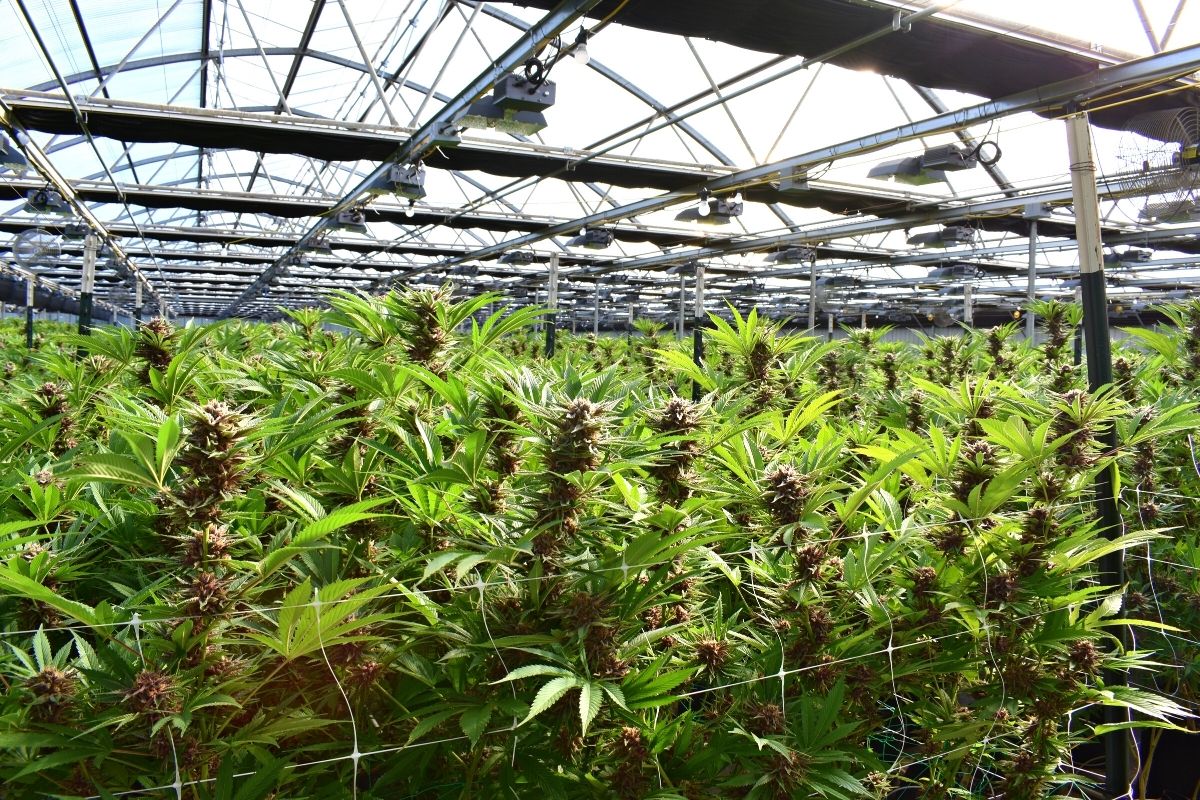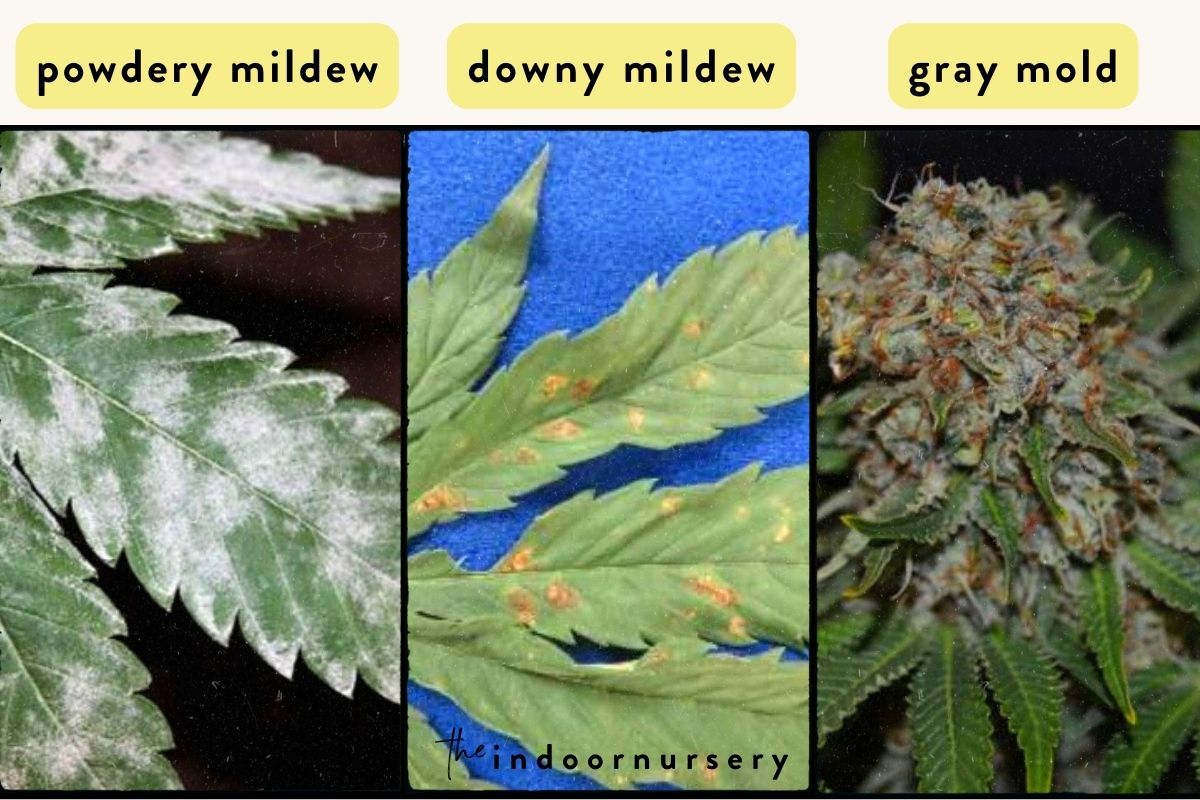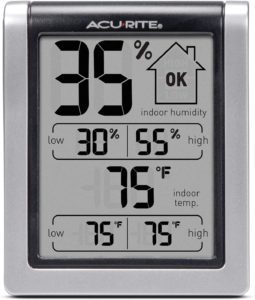As cannabis grows from a seedling to a mature, flowering plant, they require progressively less humid conditions. With this in mind, the levels within a growing environment will need to be adjusted periodically throughout the various life stages of a cannabis plant. If ignored and humidity levels left unadjusted, excessive moisture within the air can lead to several potentially harmful situations that can spoil a cannabis crop.
how humidity affects plant growth
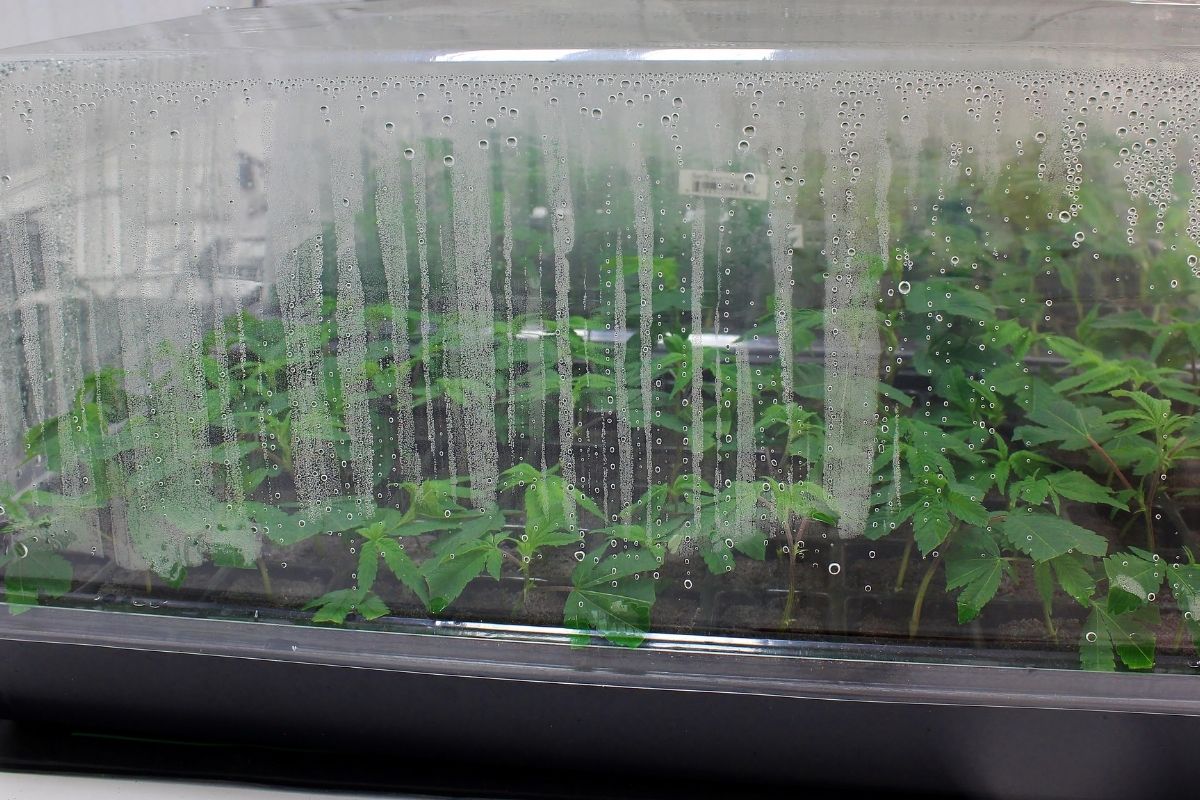
Humidity, or water vapor in the air, is an important element of the growing environment for plants. Some plants grow in very humid areas and are used to using the abundance of moisture, some – like cannabis – enjoy moderately humid conditions, while others are better suited to dry, moistureless air. Whichever the case, all plants use their stomata, the pores on their leaves, to inhale carbon dioxide and some moisture from the air, and exhale oxygen – the byproduct of photosynthesis.
These pores are also used to regulate their internal temperatures. When conditions are too humid, plants aren’t able to release enough of their own moisture into the air. This can lead to oedema, a disorder that is caused by a plant’s roots absorbing more water than its leaves can transpire. A plant might also succumb to root rot if conditions are too moist. Roots can be damaged by fungal growth when the soil is holding too much water and can’t dry out properly, which may lead to fungus gnats, while fungal or mold growth on the plant itself will damage its leaves and stems.
bud rot
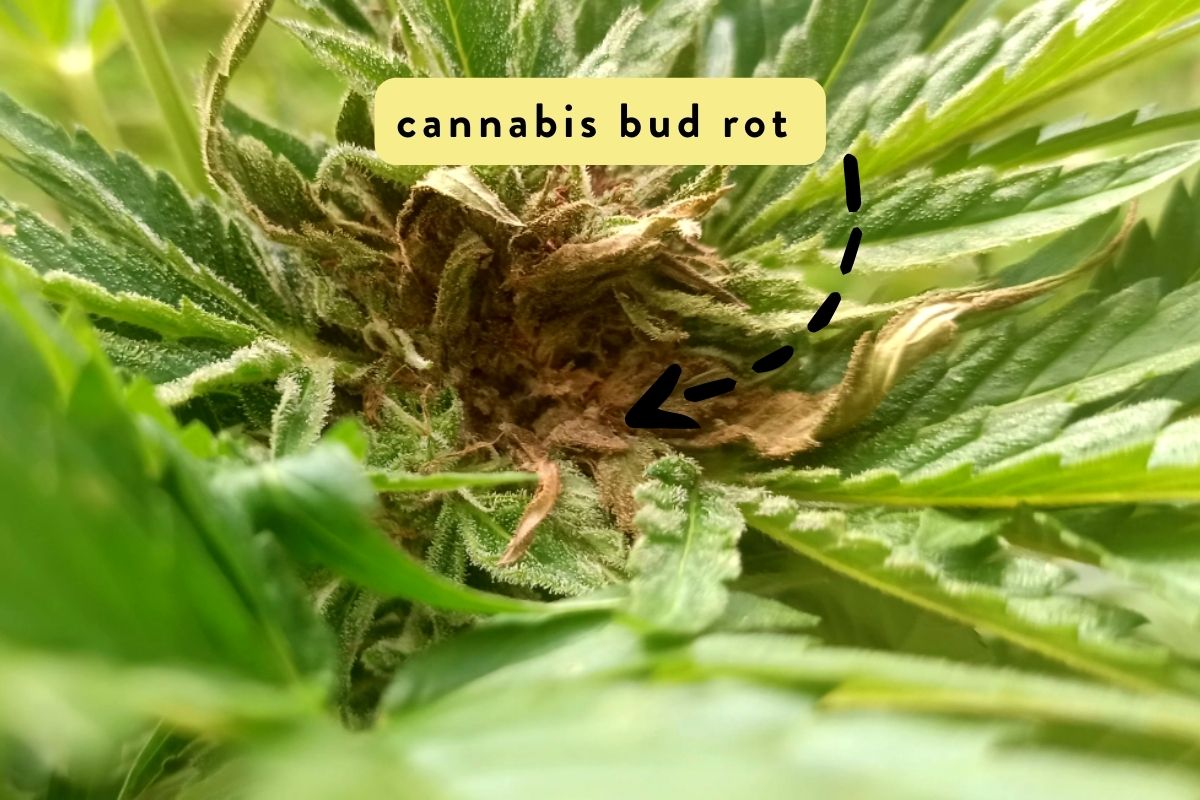
In the case of cannabis, the accursed bud rot (botrytis cinerea) can strike. Bud rot is a common fungal infection that affects the flower of cannabis. The fungus causes the buds to rot, wither, and die, leading to reduced yields and lower quality crop. The infection is most commonly caused by wet weather conditions, and can be prevented by ensuring that cannabis plants are grown in conditions that are well-ventilated and the humidity kept to optimal levels.
mildews
Another ailment that will affect cannabis plants growing in high humidity levels is Powdery mildew (Golovinomyces spp.), Downy Mildew (Pseudoperonospora spp.), or Gray Mold (Botrytis spp.). All three afflictions are different species of fungal infections that can cause cannabis leaves to yellow, wilt, and drop off. Depending on the species, the fungus may form white, gray, or black patches on the leaves that look like powder. Mildew can spread quickly and can damage or kill plants if not treated.
nutrient deficiencies
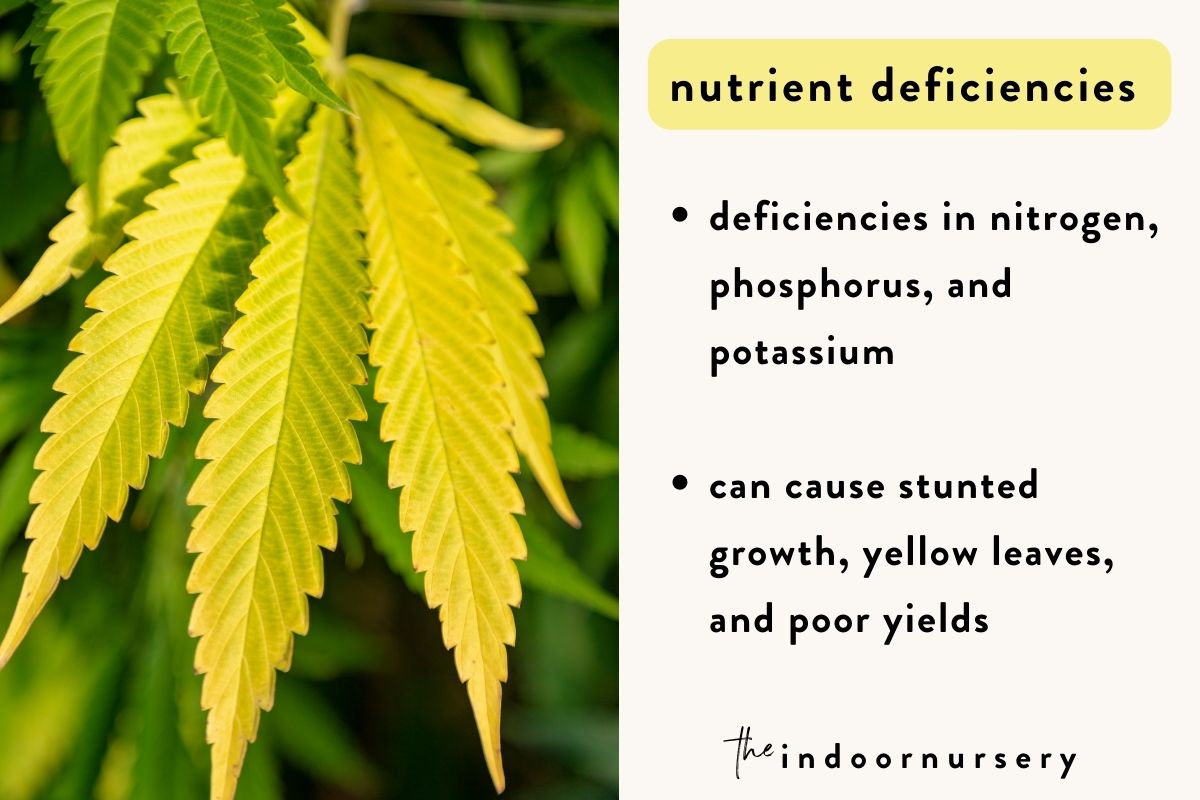
Cannabis nutrient deficiencies can also be caused by high humidity levels in a grow space. High humidity levels can cause cannabis plants to experience problems with nutrient uptake, which can lead to deficiencies in key plant nutrients like nitrogen, phosphorus, and potassium. These deficiencies can cause problems like stunted growth, yellow leaves, and poor yields.
the difference between absolute humidity and relative humidity
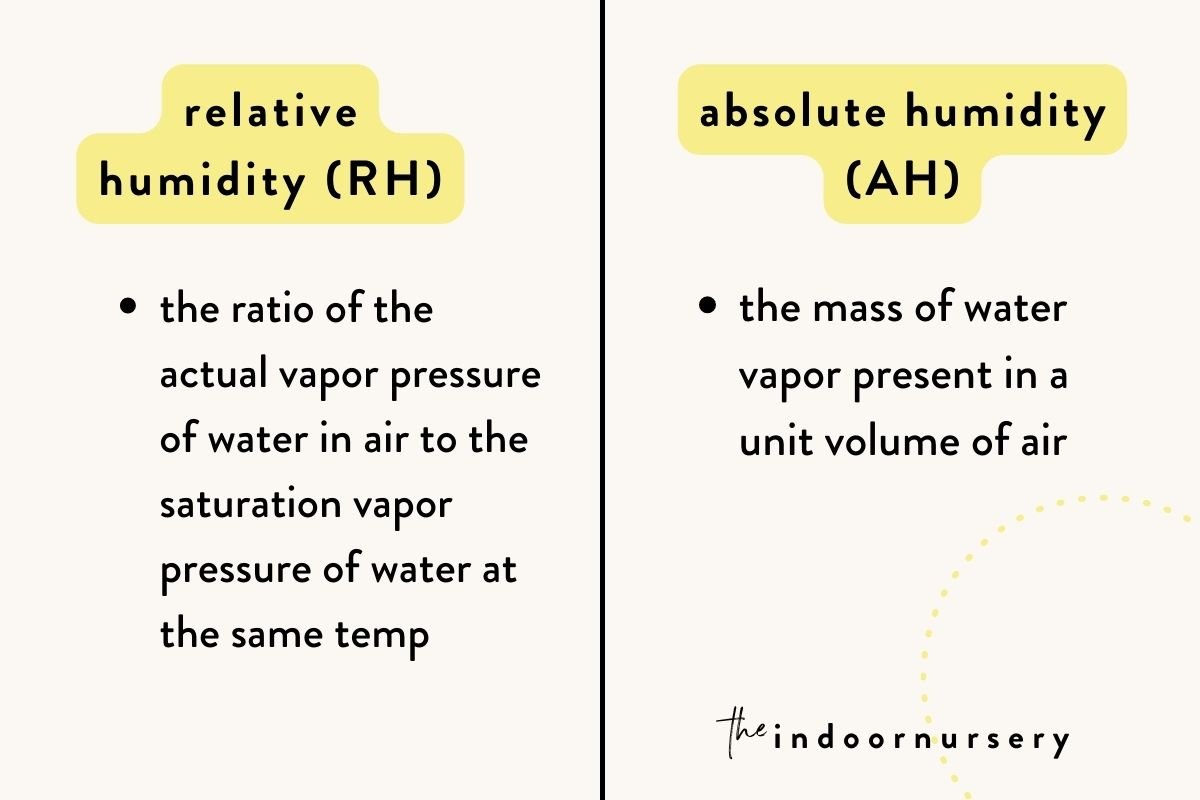
So as growers, how do we measure humidity levels?
There are two ways to measure humidity: relative humidity (RH) and absolute humidity (AH)
Relative humidity is the ratio of the actual vapor pressure of water in air to the saturation vapor pressure of water at the same temperature. Absolute humidity is the mass of water vapor present in a unit volume of air.
For the purpose of growing cannabis (and many other horticultural applications), relative humidity is used. Why? Relative humidity takes into account temperature and how the density of moisture changes as the temperature increases or decreases. Absolute humidity does not.
humidity for cannabis
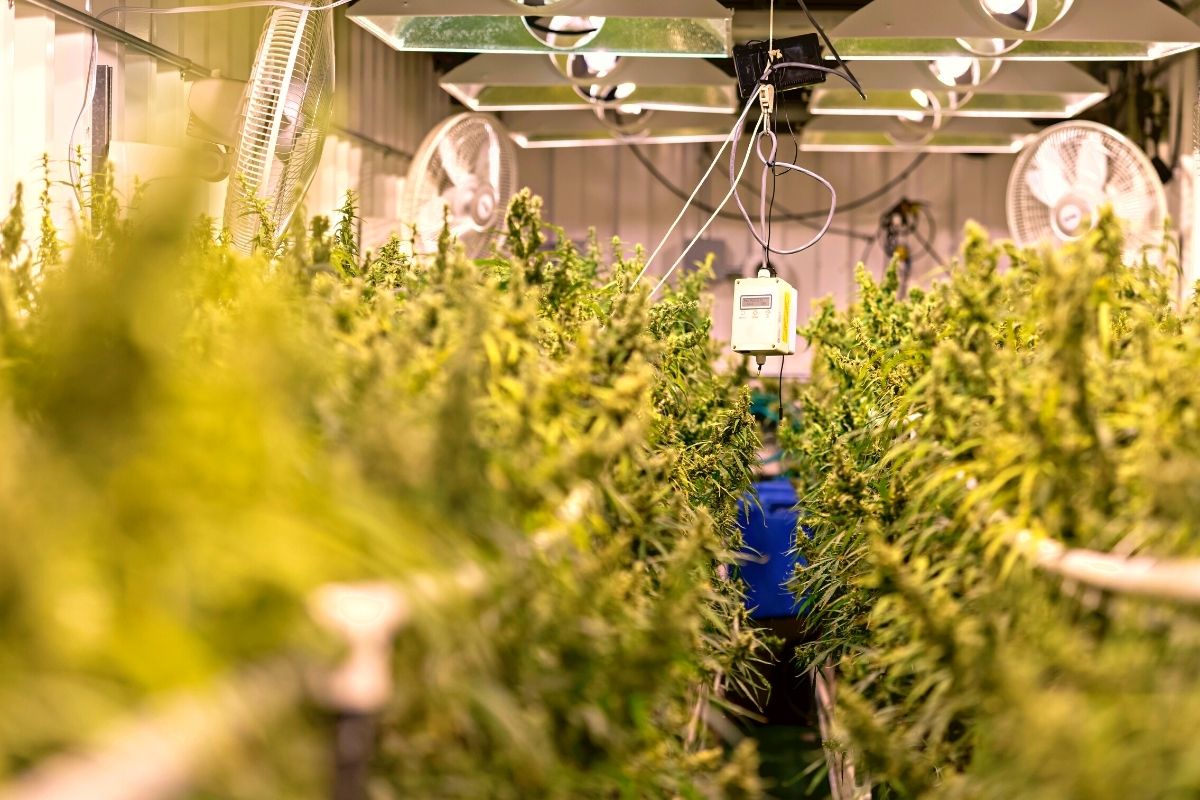
Humidity levels should change throughout a cannabis crop’s lifetime. The best humidity for cannabis will be defined by the growth stage of the plant. To produce and maintain optimal growth, here are the humidity levels that adhered to as a cannabis plant develops through its various life stages:
- Seeds and clones prefer humidity levels between 80-95% humidity
- Seedlings and plants in the vegetative stage are best grown at levels that sit within 60-70% humidity
- And for plants that are producing reproductive growth and have entered the flowering stage, 45-55% humidity works best
The need for these different levels of humidity comes from the plant’s conditioning in nature. Cannabis is native to north-central Asia, where it grows in a temperate, mountainous region that has wet springs, warm summers, and cool falls, with humidity levels dropping as the year goes on. In the spring, when temperatures are rising and there is lots of rain, seeds would naturally get a lot of moisture while they germinate and sprout. As the plants matured, the natural conditions brought breezes that provided adequate air circulation, preventing molds and over-watering issues.
Seedlings and vegetative plants have developed roots that they can store moisture in, but they still like a moderately humid environment (60-70% humidity). They’ll be growing quickly and absorbing lots of moisture from their soil and the air. Air that is too humid and moisture retentive can interfere with the plant’s growth by stressing it out, preventing sufficient transpiration, encouraging mildew growth, or rotting of the roots, stems, or leaves.
When marijuana plants are flipped from their vegetative phase to flower, the humidity should gradually be lowered to 45-55%. Large, mature plants will have roots that store lots of moisture, and many leaves to absorb water vapor from the air as necessary. These mature plants, since they’re holding so much moisture, release a lot of water vapor back into the air. A good watering can raise humidity levels as the plant absorbs and transpires the moisture, so it will be essential to have humidity-moderating solutions in place (like external ventilation and exhaust or ventilation fans).
Using a hygrometer (a humidity meter) is essential to being able to keep an eye on the tent’s average humidity level each day. If temperatures rise, or ventilation fails, and humidity levels get out of hand, it can quickly become an inhospitable and potentially dangerous environment for your plants.
how to lower humidity in grow tent with a dehumidifier
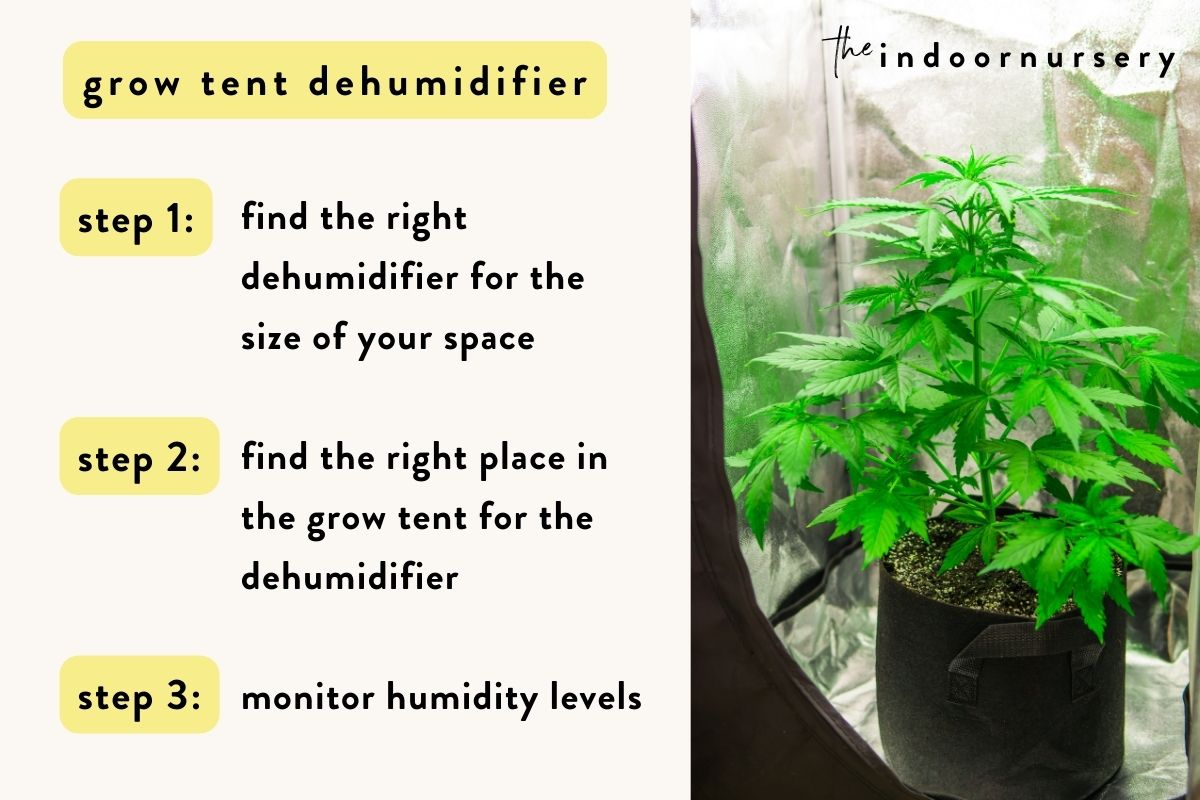
- Step 1: find the right dehumidifier for the size of your space. If you have high humidity levels in your grow space, you’ll need to find a unit that is able to remove enough water per day to reduce the humidity to the right level for that stage of plant growth. Larger rooms will need larger, or multiple, units to pull more moisture. Most dehumidifiers today have a digital control and can be set to turn on when the air moisture level reaches a certain number, which you can set at different levels for the different growth stages.
- Step 2: find the right place in the grow tent for the dehumidifier. Moisture and humidity can build up in areas with “stale” or “dead” air, pockets where ventilation isn’t moving the air around. This can happen in corners, under shelves, behind plants against a wall, or under ventilation ducts. Air circulation throughout the tent is important to avoid moisture building up in any areas where air isn’t keeping conditions dry, so consider how strategically your dehumidifier is placed in your tent.
- Step 3: monitor humidity levels. A dehumidifier that’s running too frequently or too long at a time can lead to over-drying the air. When moisture is pulled from the air, then removed when you empty the tank (this water, pulled from the air, should be poured out because it contains contaminants from the air: spores, bacteria, even trace minerals and metals, among other molecules and particles), that moisture is gone from the tent and isn’t cycled back into the air. Be sure that when you water, you’re only watering enough to maintain the proper humidity level.
how to lower humidity in grow tent without dehumidifier
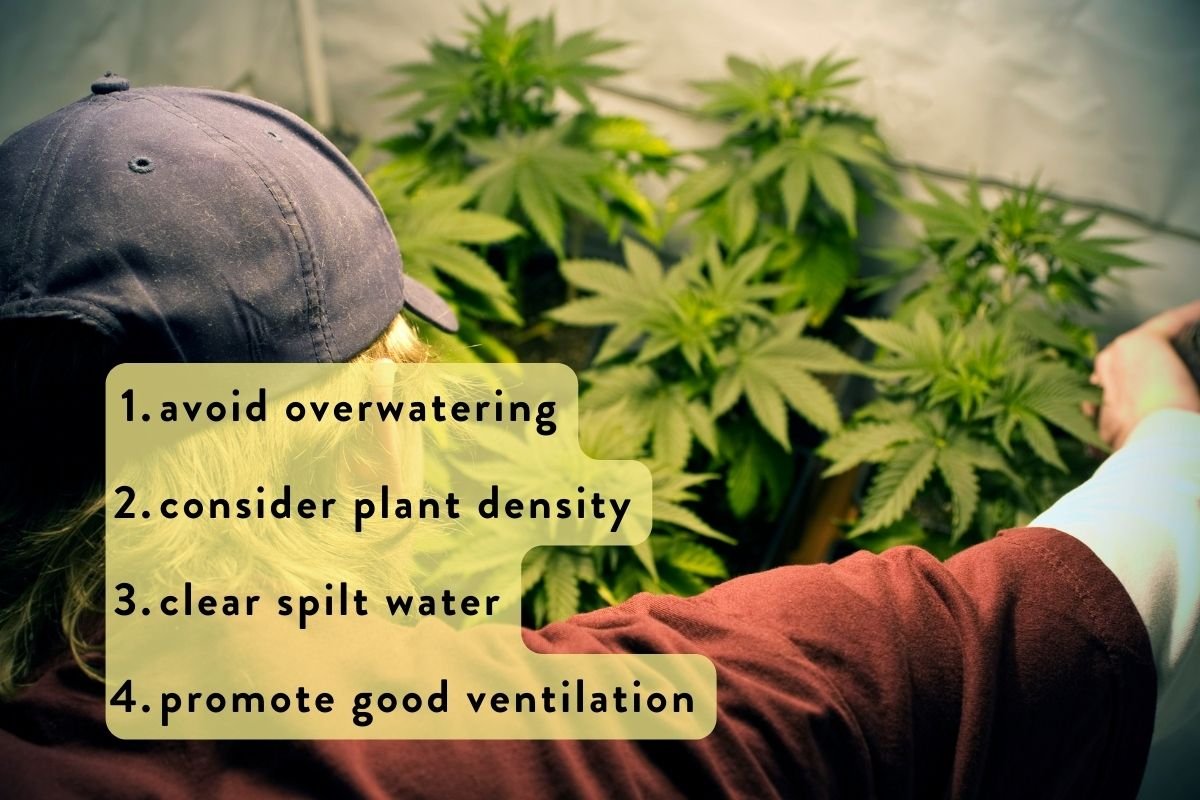
If you don’t have space for a dehumidifier, or you don’t want the complexities that come with the machinery, there are many no-tech options to keep grow tent humidity management simple and straightforward. A hygrometer will guide you in knowing when the levels have been lowered enough to keep the plants happy.
1. avoid overwatering
Over-watering is an easy (and usually harmful) way to raise the humidity levels in your grow tent. Cannabis plants like to be watered in different amounts and with different frequencies over the various stages of their lifetime. At germination, seeds like high humidity and a little water each day of the week, while seedlings like slightly less. As plants get bigger and can hold more water, they only need to be watered two or three times a week; any more, the environment may start becoming too moist. Make sure your plants aren’t in too big of pots, either, because these hold more water at a time than smaller ones, and more water means a potentially higher humidity level.
2. consider plant density
Overcrowded tents can quickly lead to excess humidity. When plant leaves overlap, they create a barrier for air and water vapor to build up in the lower levels of the tent. These dark, cool, and humid areas can quickly lead to mildew growth or water buildup on the leaves. “Lollipop” trimming your cannabis plants, where the bottom branches are removed to promote airflow, is a strategy some growers use to prevent bushiness and humidity buildup. As weed plants mature, they release more humidity, and more plants will produce more humidity and may raise it to an uncomfortable level, another reason to keep the number of plants in your tent to a number that doesn’t crowd in your particular tent size.
3. clear spilt water
Spills from a watering can become a problem if they lead to mildew growth or rot. Excess moisture is the first to evaporate when temperatures are high enough and will contribute to raising the humidity level, so make sure to wipe up any spilt water right when it happens to be sure it doesn’t sit around.
4. promote good ventilation
Good ventilation is essential to maintaining good humidity levels. Fresh air needs to be pulled in, and interior air needs to be exhausted, to keep the air circulating so no water is able to sit anywhere for too long. Moisture that is allowed to linger in the air is more likely to condense onto the wall, a leaf, or on the floor and attract other water molecules from the air. Good ventilation keeps temperatures lower as well, and since lower temperatures hold less water, there’s less moisture present to be available to linger in the first place.
FAQ
how do lower humidity in a tent when the grow lights are off?
When your grow lights are off, temperatures should drop a bit and less water will be held by the air, and less will be evaporating. If your humidity levels are too high even when your lights are off, using a dehumidifier, watering less, keeping the number of plants down, and promoting good air circulation throughout the tent will all contribute to maintaining lower humidity levels. If necessary, lowering temperatures with air conditioning can help control humidity.
how to lower humidity in a tent when drying?
When you’re drying your harvested marijuana, humidity levels should be in the 55-60% range over about 2 weeks, although drying times will vary by grower or producer. Using a dehumidifier that is set to the right percentage and promoting good air circulation with a vent and fan(s) will keep the space at the right humidity to slowly dry your flower to the desired level of moisture content.
final thoughts
The right humidity is integral to the health and potential harvest size of your cannabis plants. It’s affected by many of the other aspects of the tent’s growing environment, so the humidity level needs to be measured and maintained carefully to ensure there isn’t too much moisture in the air.
more about humidity
- The 6 Best Dehumidifiers For Grow Tents
- 7 Best Hygrometers For Indoor Plants
- 9 Best Plant Humidifiers For Indoor Jungle Vibes
- The best grow tent humidifier for indoor gardening
- How to increase humidity in a room with indoor plants
- How to fix low humidity leaf curl for humid-loving plants
- Where to place humidifier for plants (farther than you think)

